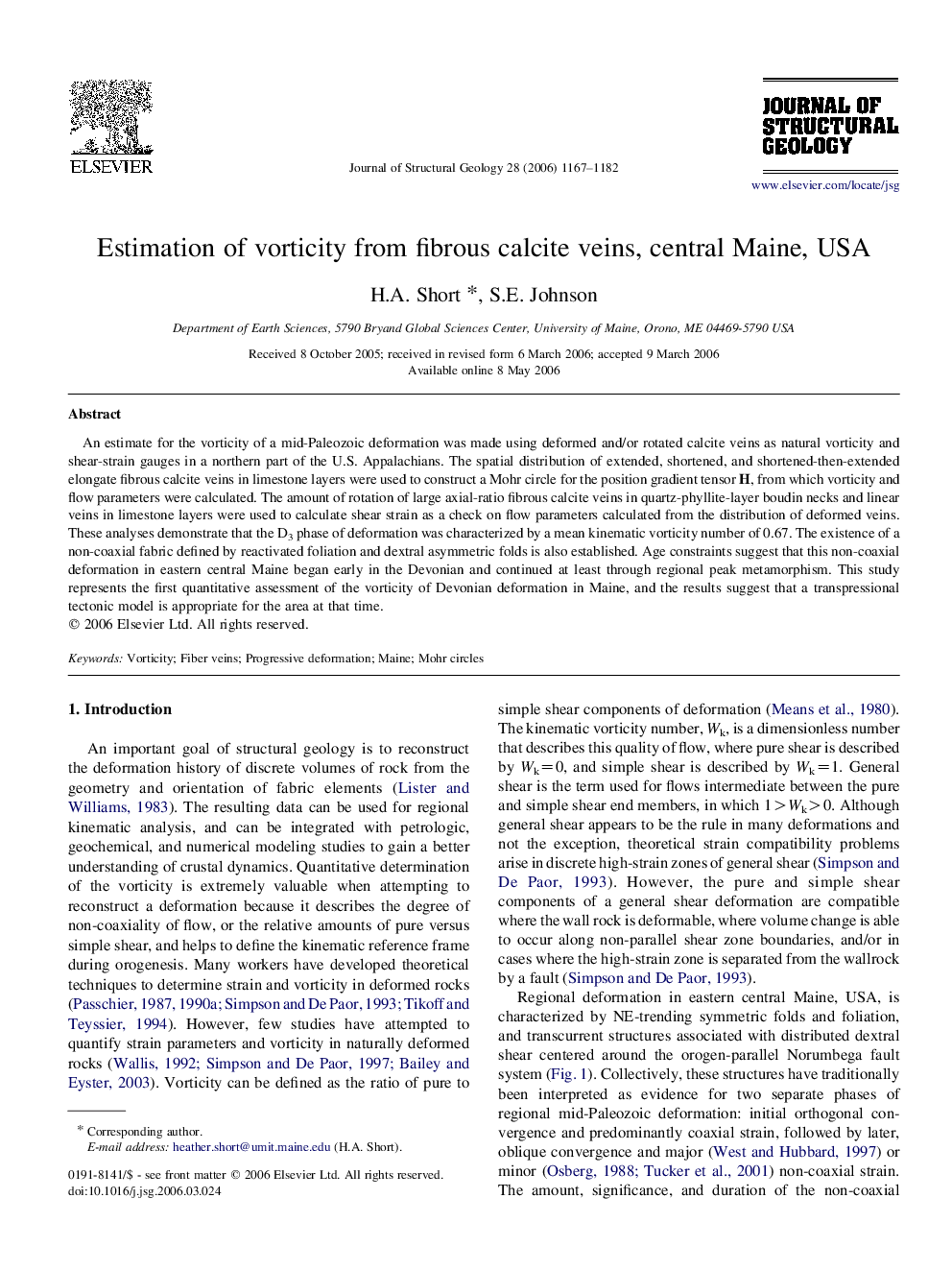| Article ID | Journal | Published Year | Pages | File Type |
|---|---|---|---|---|
| 4734180 | Journal of Structural Geology | 2006 | 16 Pages |
An estimate for the vorticity of a mid-Paleozoic deformation was made using deformed and/or rotated calcite veins as natural vorticity and shear-strain gauges in a northern part of the U.S. Appalachians. The spatial distribution of extended, shortened, and shortened-then-extended elongate fibrous calcite veins in limestone layers were used to construct a Mohr circle for the position gradient tensor H, from which vorticity and flow parameters were calculated. The amount of rotation of large axial-ratio fibrous calcite veins in quartz-phyllite-layer boudin necks and linear veins in limestone layers were used to calculate shear strain as a check on flow parameters calculated from the distribution of deformed veins. These analyses demonstrate that the D3 phase of deformation was characterized by a mean kinematic vorticity number of 0.67. The existence of a non-coaxial fabric defined by reactivated foliation and dextral asymmetric folds is also established. Age constraints suggest that this non-coaxial deformation in eastern central Maine began early in the Devonian and continued at least through regional peak metamorphism. This study represents the first quantitative assessment of the vorticity of Devonian deformation in Maine, and the results suggest that a transpressional tectonic model is appropriate for the area at that time.
